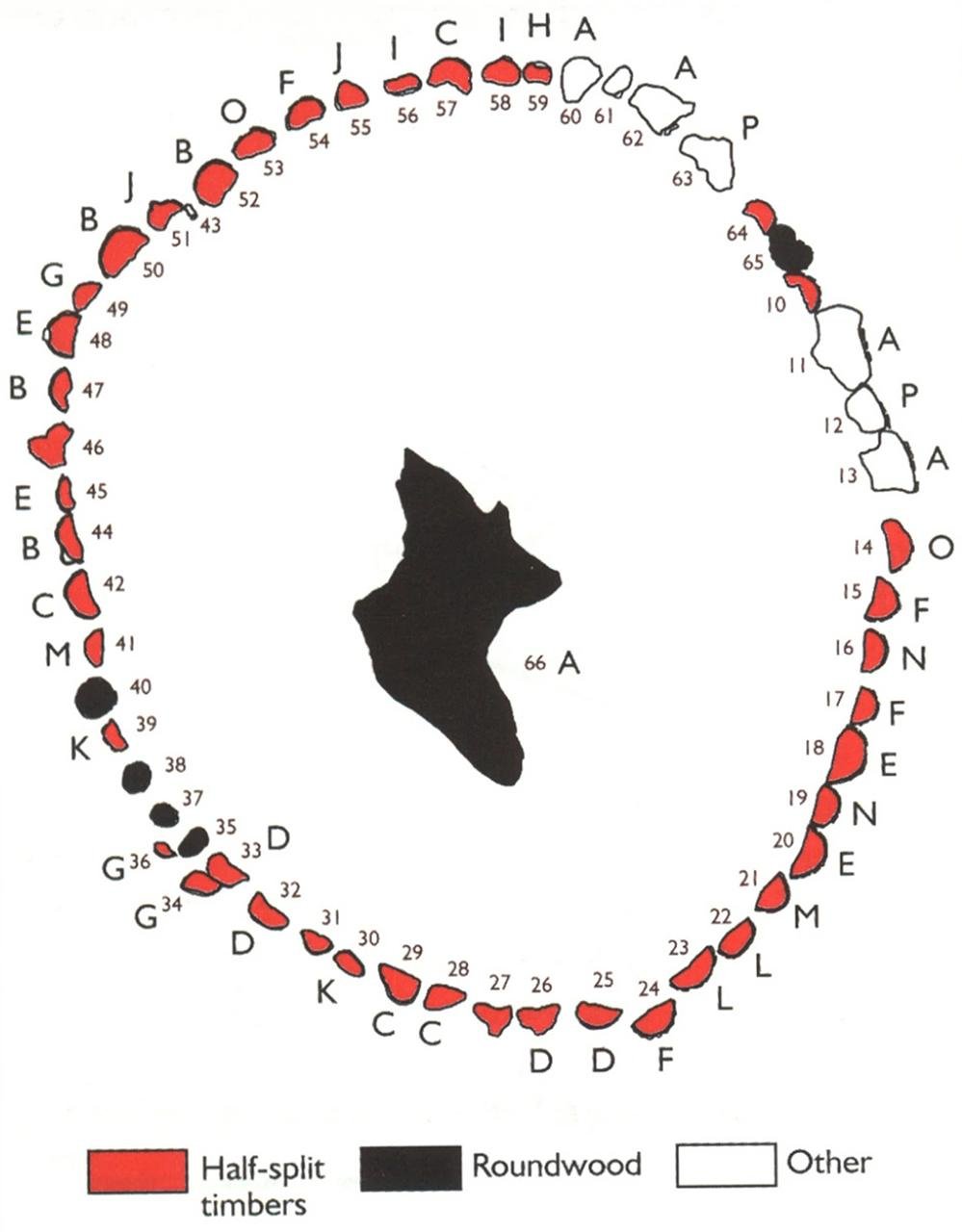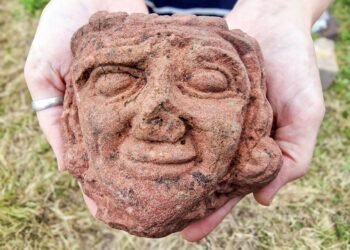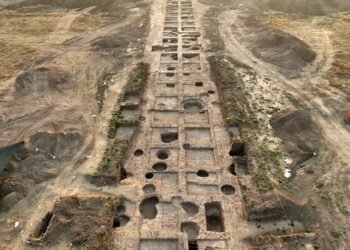A recent study proposes that the mysterious prehistoric monument known as Seahenge, found in the United Kingdom, was constructed for rituals aimed at extending the summer during the extreme climatic changes of the 3rd millennium BCE.

Seahenge, also known as Holme I, is a prehistoric timber circle monument discovered in 1998 on Holme Beach in Norfolk, UK. This enigmatic structure, dating back to 2049 BCE during the early Bronze Age, consists of an upturned tree root surrounded by fifty-five small split oak trunks forming a circular enclosure about 22 feet in diameter.
The monument was originally located in a salt marsh area protected from the sea by sand dunes and mud flats. Over the centuries, peat formed in this swampy environment, preserving the timbers from decay. Shifting sands exposed Seahenge, prompting its excavation in 1999 despite protests from local druids and villagers.
The purpose of Seahenge has long been debated. Initial theories suggested that it served as a site for sky burials, where the dead were placed to be consumed by carrion-eating birds, or as a marker of an individual’s death.

However, a recent study published in GeoJournal by Dr. David Nance from the University of Aberdeen proposes a different explanation. Dr. Nance argues that Seahenge, along with a nearby monument known as Holme II, was constructed during a period of extreme climatic change for rituals aimed at prolonging the summer and bringing an end to severely cold weather.
Dr. Nance’s study places Seahenge within the context of a prolonged period of decreased atmospheric temperatures and severe winters during the 3rd millennium BCE. He explains, “Dating of the Seahenge timbers showed they were felled in the spring, and it was considered most probable that these timbers were aligned with sunrise on the summer solstice.” This alignment suggests that Seahenge was part of rituals intended to extend the summer and ensure the return of warmer weather.
Dr. Nance draws upon regional folklore, particularly the myth of the pent cuckoo. According to folklore, the summer solstice marked the time when the cuckoo, symbolizing fertility, stopped singing and returned to the Otherworld, taking the summer with it. The monument’s form, with its upturned oak-stump at the center, appears to imitate the supposed winter dwellings of the cuckoo, such as a hollow tree or “the bowers of the Otherworld.” This ritual is remembered in the myth where an unfledged cuckoo was placed into a thorn bush to be “walled-in,” symbolically extending the summer, though the bird always eventually flew away.

Holme II, located over 300 feet from Seahenge, consists of two concentric timber circles surrounding a pit containing two oak logs. Dating to the same period as Seahenge, Holme II has been interpreted by Dr. Nance as having a different but related ritual purpose. He suggests that Holme II was associated with rituals of human sacrifice to appease the goddess Venus, aiming to restore harmony during times of misfortune.
Dr. Nance points to legends from Iron Age Ireland and northern Britain, which describe the sacrifice of “sacred kings” every eight years at Samhain (now Halloween) to coincide with the eight-year cycle of Venus. “Evidence suggests that they were ritually sacrificed every eight years at Samhain when Venus was still visible,” he explains. The fixtures in Holme II, thought to hold a coffin, were oriented towards sunrise on Samhain in 2049 BCE, reinforcing the connection to these rituals.
Dr. Nance notes that while modern societies have various means to adapt to climatic fluctuations, ancient societies often turned to rituals and folklore as coping mechanisms. He writes, “The contribution of folklore, including rituals and social customs, ‘weather wisdom,’ and the world-views of present-day indigenous societies, also provides alternative conceptions of climate change.” He emphasizes that such responses, though varied and localized, were critical for the survival and adaptation of early coastal societies.

























lol